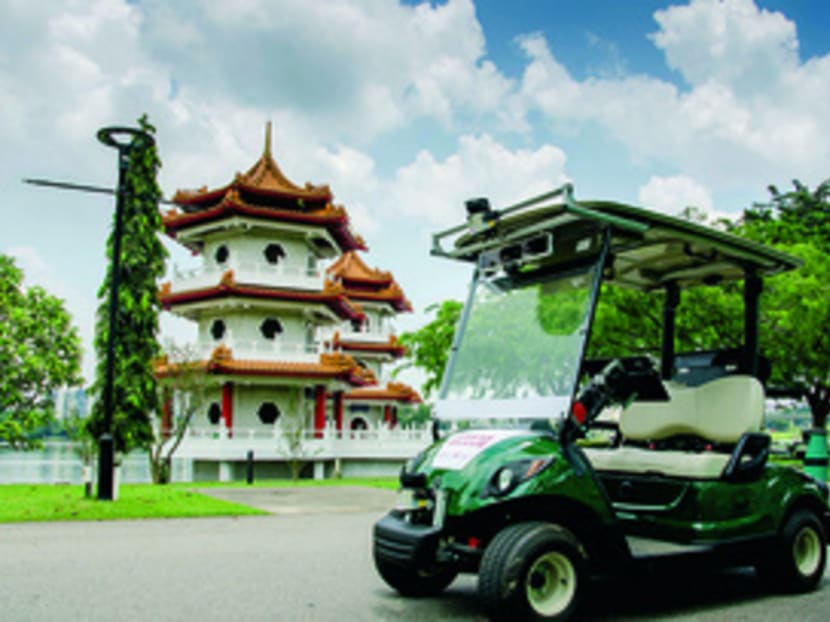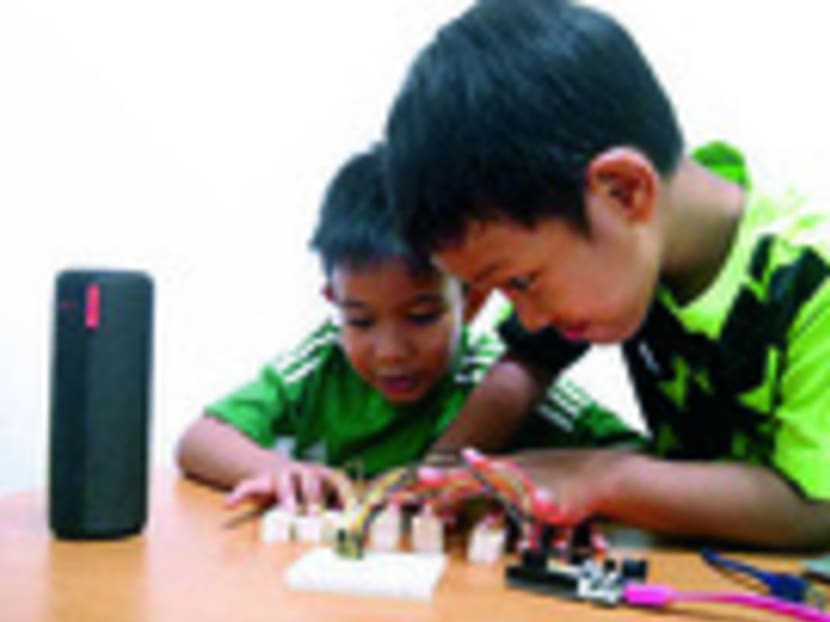Smart living for everyone
Want to introduce Grandma and Grandpa to the fascinating world of 3D printing, or give them a chance to express their creativity with LEDs and motors? Visit Tech Saturday and keep them abreast of the latest tech developments.




Want to introduce Grandma and Grandpa to the fascinating world of 3D printing, or give them a chance to express their creativity with LEDs and motors? Visit Tech Saturday and keep them abreast of the latest tech developments.
The tech carnival, which is organised by the Infocomm Development Authority of Singapore (IDA), offers visitors of all ages a glimpse into Singapore’s exciting future, thanks in part to recently launched Smart Nation initiatives.
Smart tech for all ages
While many may think that Smart Nation initiatives would mainly benefit younger Singaporeans, the push for an interconnected nation is aimed at all levels of society. Making technology accessible to the elderly is one of the goals of the Smart Nation initiatives, and for good reason.
In a speech at the Smart Nation: Data Works event last year, Mr Steve Leonard, IDA executive deputy chairman, highlighted an eye-opening statistic: By 2050, there will be more people aged 65 and older here than those who are five years old or younger.
It’s a critical issue, and one that Smart Nation technologies are capable of addressing. For instance, enhanced interconnectedness can make it possible to provide care for patients while they are at home, and help ensure that patients get the care they need, when they need it. This, in turn, will reduce the burden on healthcare services.
A team of National University of Singapore researchers has developed the tele-rehabilitation system that allows patients to perform rehabilitation exercises at home, with the help of their caretakers. Tablets are used to guide patients through exercises via videos. Therapists at the hospital then assess the data that is captured through motion sensors and conduct patient-therapist videoconferences.
Meanwhile, the Housing and Development Board (HDB) recently completed a trial of the Smart Elderly Monitoring and Alert System (SEMAS), which can help loved ones watch out for elderly relatives who live alone. The system uses sensors to establish the elderly resident’s daily routine, then alerts relatives if it detects any deviation.
Creating our future
Initial steps such as these are an encouraging start on the path to realising our Smart Nation goals, but another long-term challenge needs to be addressed even while we are aiming for this: Sustaining Smart Nation goals by developing local expertise.
To help develop an innovation-driven economy, the IDA is one of several government bodies encouraging local startups. IDA initiatives include Accelerator, which helps launch and develop tech startups, and Accreditation@IDA, which validates tech companies’ product performance claims.
The goal is to build a slew of Singapore-based startups whose ideas have global relevance, and some local companies like Novelsys have already hit the ground running.
It recently made headlines with its Ampere wireless charging phone sleeve that lets users charge their phones by placing it on or in the sleeve.
The device is slim enough to slip into pockets for ease of use. The firm is also planning to launch Juice, a local network of charging stations. Given the prevalence of smartphone use globally, such devices have tremendous potential.
Third Wave Power has launched the mPowerpad portable solar charger. The device has many applications, from ensuring that travellers have power on the go to providing power in remote locations during disaster-relief operations.
Future smart needs could be met by derivatives of the Singapore-MIT Alliance for Research and Technology (SMART) driverless golf cart, which explores the concept of mobility-on-demand. It could increase safety by eliminating driver error and offer mobility to commuters who are unable to drive.
The commercial potential of such ideas is likely to be key to ensuring Singapore’s continued success on the global stage.
The Internet of everything, for everyone
A smart environment is a common interactive space with information like the location of the best food, traffic conditions, and the ability to generate new business opportunities. Programmes like Virtual Singapore, an integrated 3D digital model of the city state, contains layers of rich data that can be used for planning and decision-making purposes.
Making smart technology readily accessible, Project Bus Stop has re-imagined the bus stop as a social node.
The prototype in Jurong East includes interactive media boards, a phone charging station and bicycle parking, offering commuters point-to-point access to smart technology.
Highlighting the importance of such technological initiatives at the Founders Forum Smart Nation Singapore reception at the Istana on Monday, Prime Minister Lee Hsien Loong urged officials and guests to use Singapore as a base to change the world and tackle its biggest challenges using technology. Produced by the TODAY Special Projects Team





